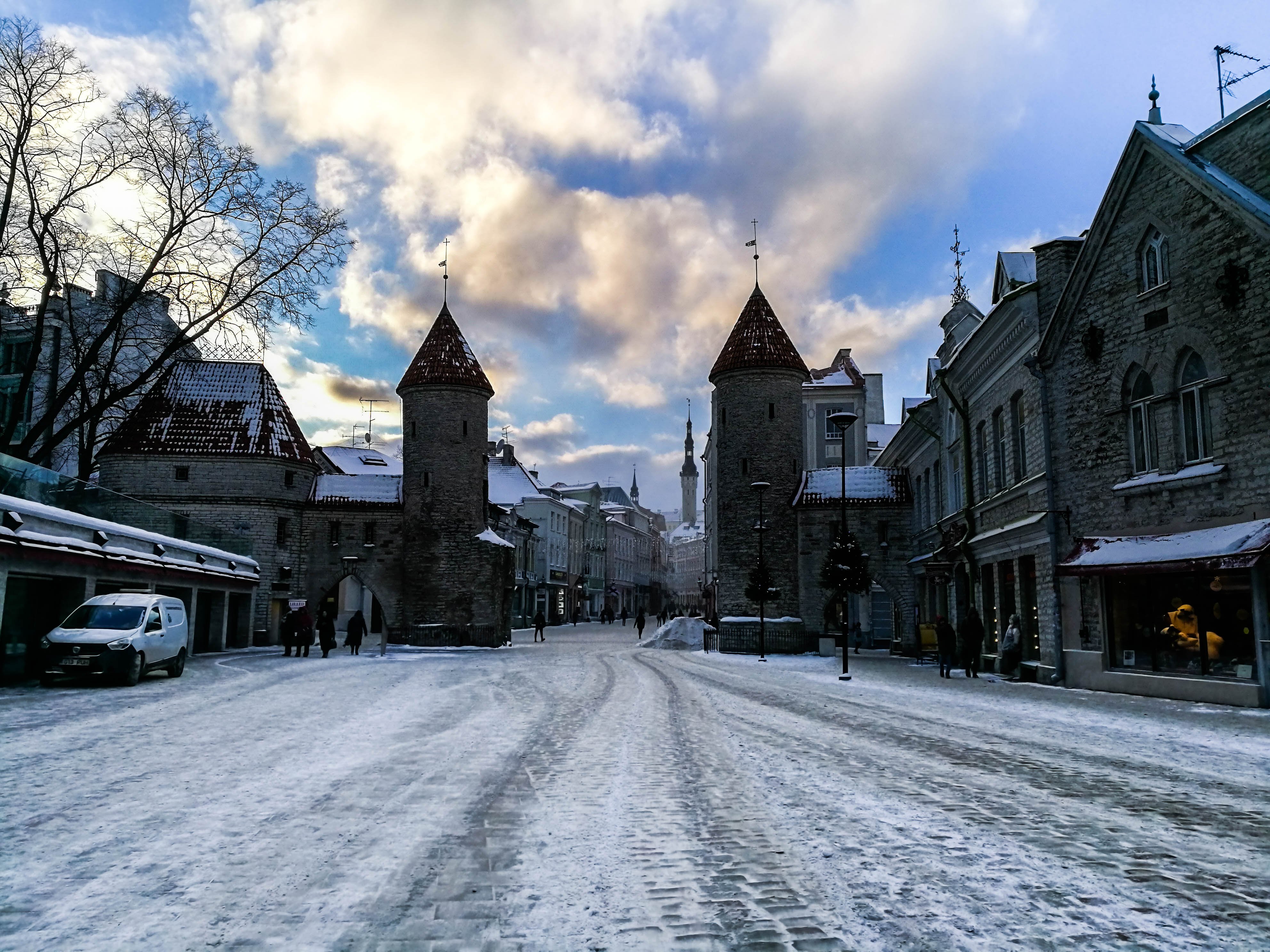
Viru gates of Tallinn Old Town city walls
Built in 14th century, Viru street gates is probably the first thing you’ll see entering the Tallinn Old Town on foot. And it should be. The picturesque twin towers is somewhat a symbol of the Old Town and one cannot help, but by crossing it, feel like traveling through time to the 18th century. Viru Gates actually used to be way more complex and not as wide as it now. In 1880s order to make a room for the traffic the gate was pulled down, but two corner towers remain standing to this day.
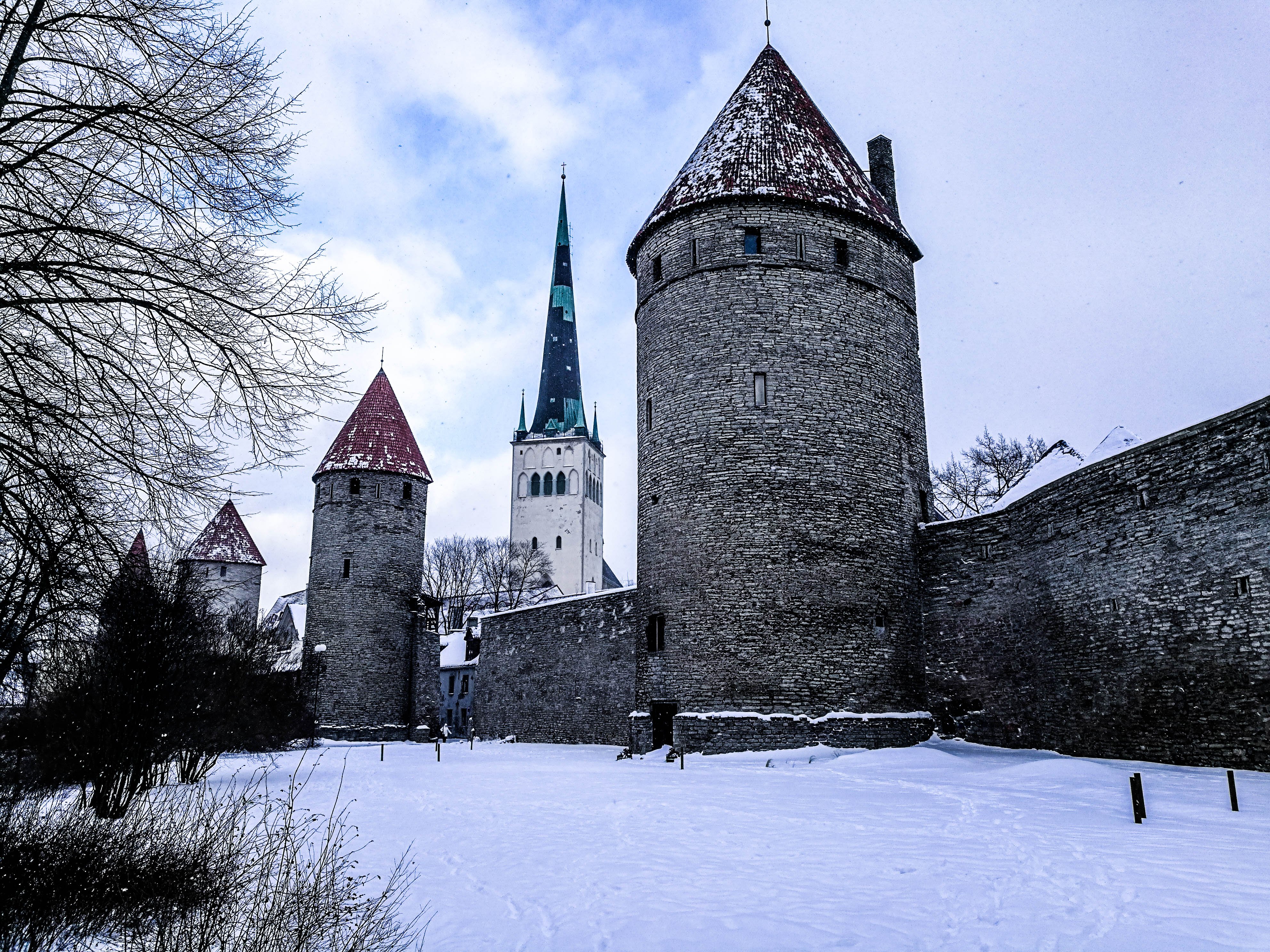
City walls of Tallinn Old Town
Probably the main reason why you feel in the Tallinn Old Town like in a fairy tale is it’s city walls. Tallinn has one of the best preserved city fortifications in Europe. Out of 2.4km and 46 towers, 1.9km of original city walls with 20 towers are still standing to this day. Walking in an area surrounded by these walls, the Old town of Tallinn, evokes images of medieval heroic knights and damsels in distress.
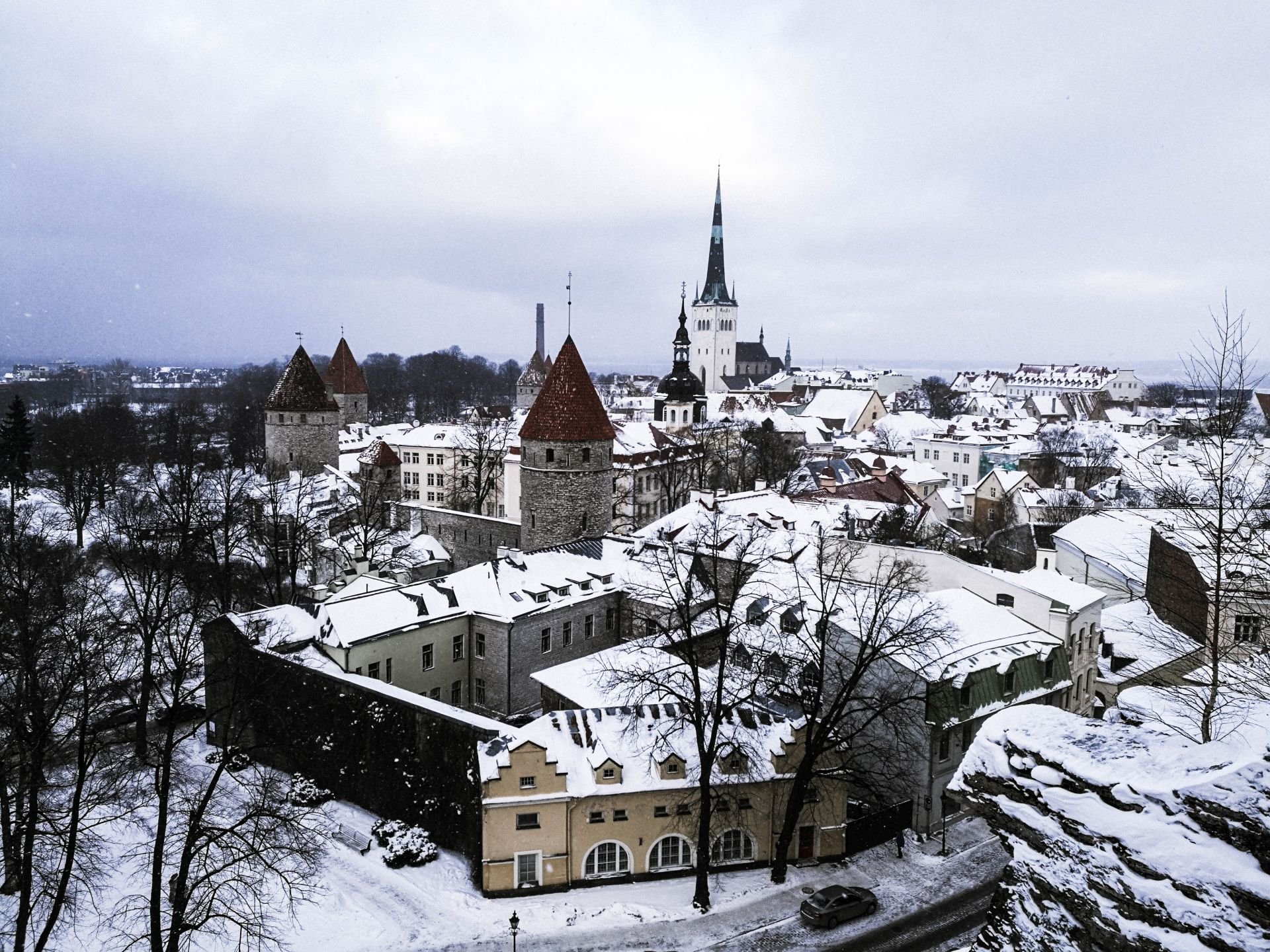
Tallinn Lower Town
The heart region of Tallinn Old Town separated into two main parts which even were under a different administrative units throughout the history. In 1248 when Tallinn gained its urban rights, they were enforced only in the lower town as Toompea remained under jurisdiction of the Order. Here you can see the lower part of the Old town with St Olav church tower piercing the skies.
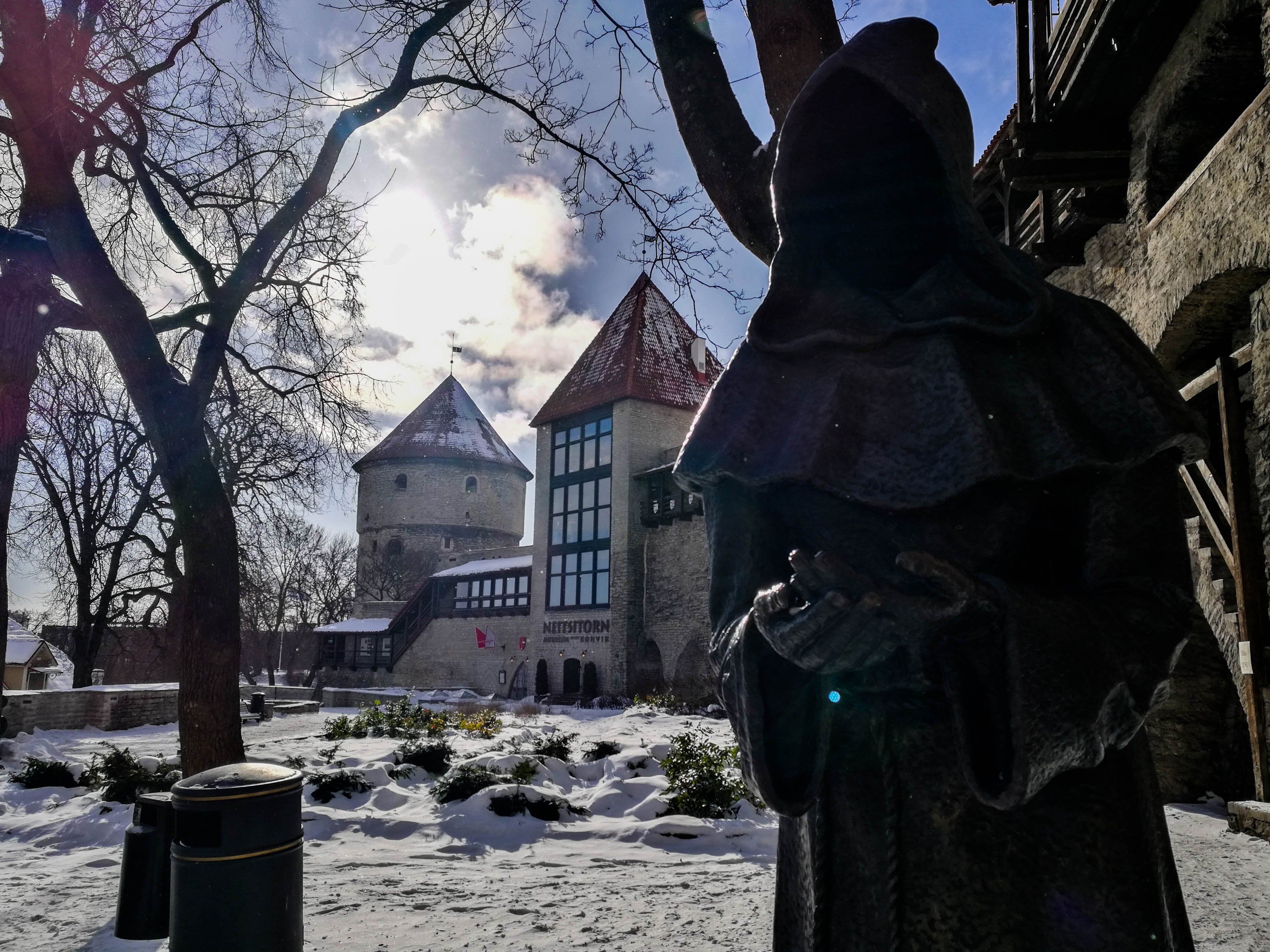
Danish King’s Garden & Maiden Tower
Maiden tower name is kinda ironic as the tower used to be a prison for prostitutes. Once a deal was made between an ugly prostitute and the devil – girl would get beauty, and the devil gets her soul. A part of the deal was that the girl was to seduce as many male townsfolk to the path of sin as she possibly could. In the end, the prostitute was declared a with and executed.
In recent years, a male voice has been heard singing, yet the tower has always turned out to be empty upon inspection. There is cafe in the tower, whose staff credit the ghosts with helping them keep the place in order. After all, ghosts are still very much in residence in Tallinn Old Town, and you can still meet eerie monks in the Danish King’s Garden today.
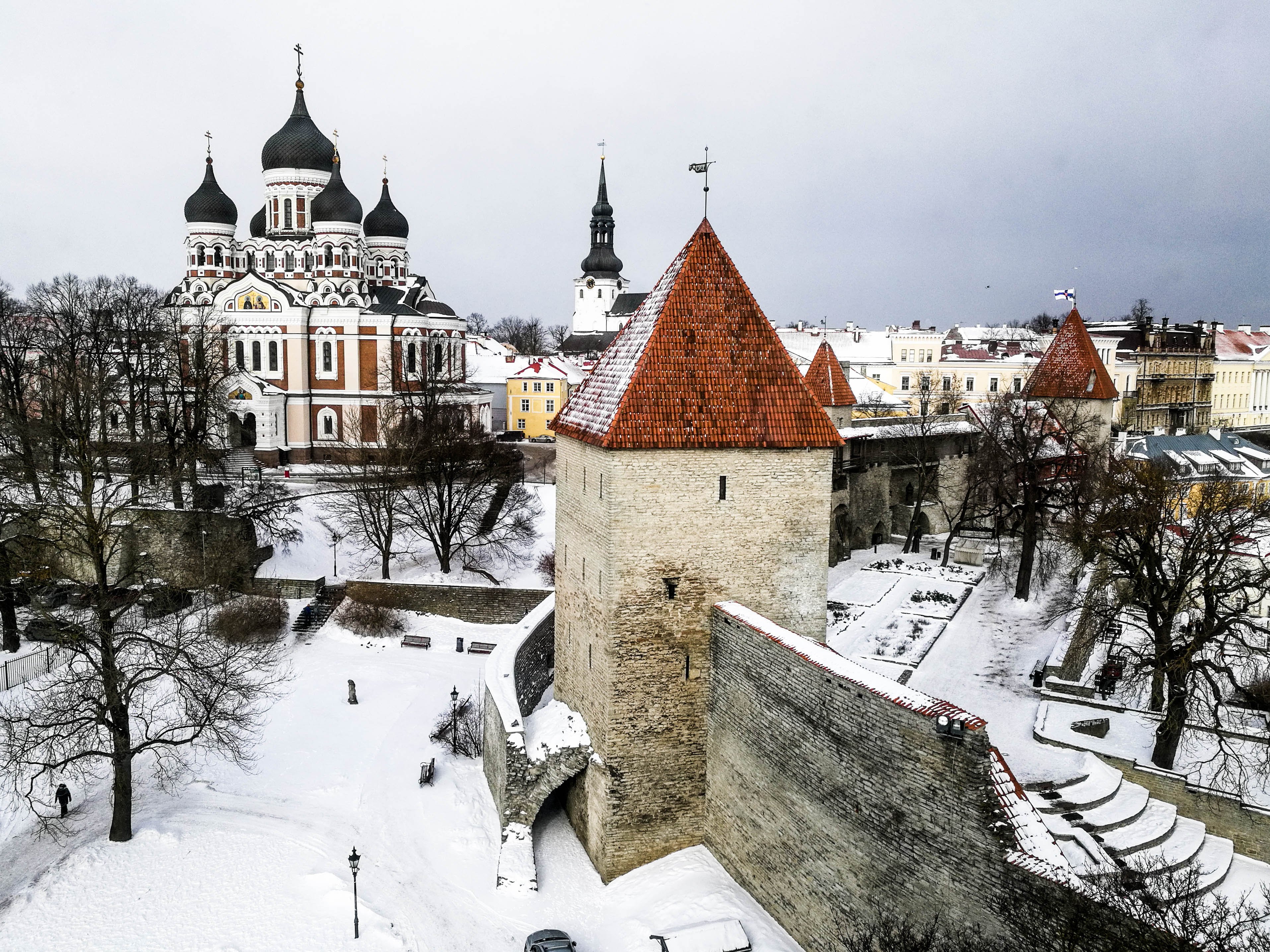
Toompea (Tallinn Upper Town)
This part of the Tallinn Old Town stands on a limestone tabletop hill in a heart of the city. This is where the first people settled and there are even suggestions that the first fortress was already standing there in the Age of Vikings. Toompea history is closely related to the history of ruling powers in the region, it switched from Danes to Livonian Order, Swedes, Russians and now Estonians. Toompea and the Lower Town joined under the same administration only in 1889, when Russification policies changed the laws of both towns into Russian administrative law.
From left to right: Alexander Nevsky Cathedral, St. Mary’s Cathedral, Maiden Tower and Danish King’s Garden.
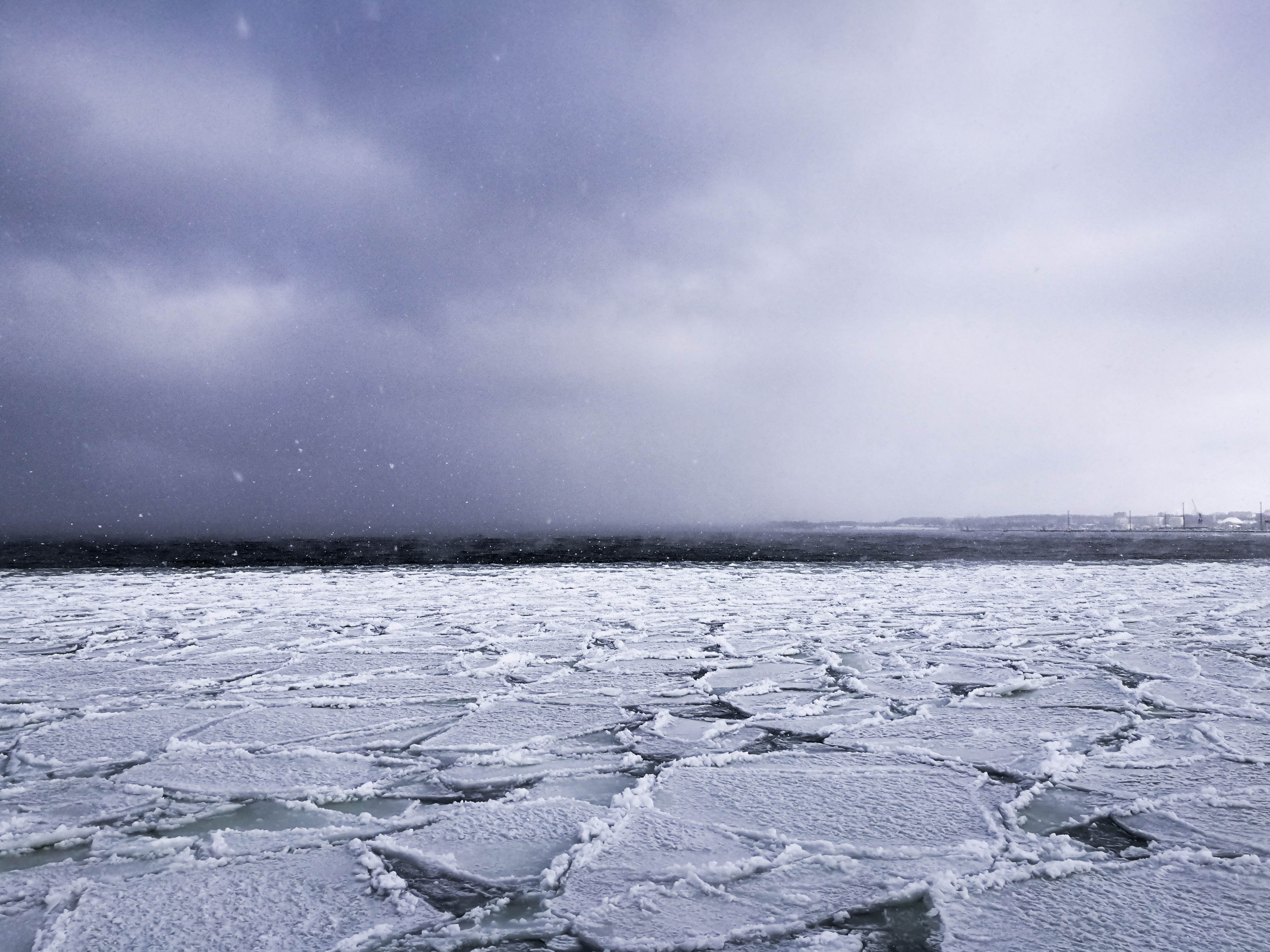
Tallinn Harbour
The favourable harbour was one of the essential preconditions for the rising town. It evidently evolved already at the time of the Migration Period in 4th-6th century. The western countries began to take a greater interest in the routes east across the Baltic Sea in the 9th – 10th centuries, it is when Tallinn made a name as an ancient harbour and a trading place. Interestingly, the first port stood way into inland as back then the sea at some places reached the walls of Tallinn Old Town.

The Capital of Estonia
Big changes came into Tallinn during the 4th quarter of 19th century as the industrial age started to take place. A several new laws were adopted when capitalism developed: an abolition of serfdom, a new passport law and a need of labour power for railroad construction between Tallinn and St. Petersburg, were the main reasons for the increased Estonian population in Tallinn. This surge during the World War I led to the birth of the Republic of Estonia and its capital Tallinn on February 24 1978.
By a secret protocol of the non-aggression pact between the Soviet Union and Germany, signed on 23 August 1939, the Baltic States fell into the Soviet sphere of interest. On 28 September 1939 Estonia was forced to sign the mutual assistance pact according to which 25000 men of the Red Army were allowed to come to the Estonian territory and Estonian ports were opened to Soviet Battleships.
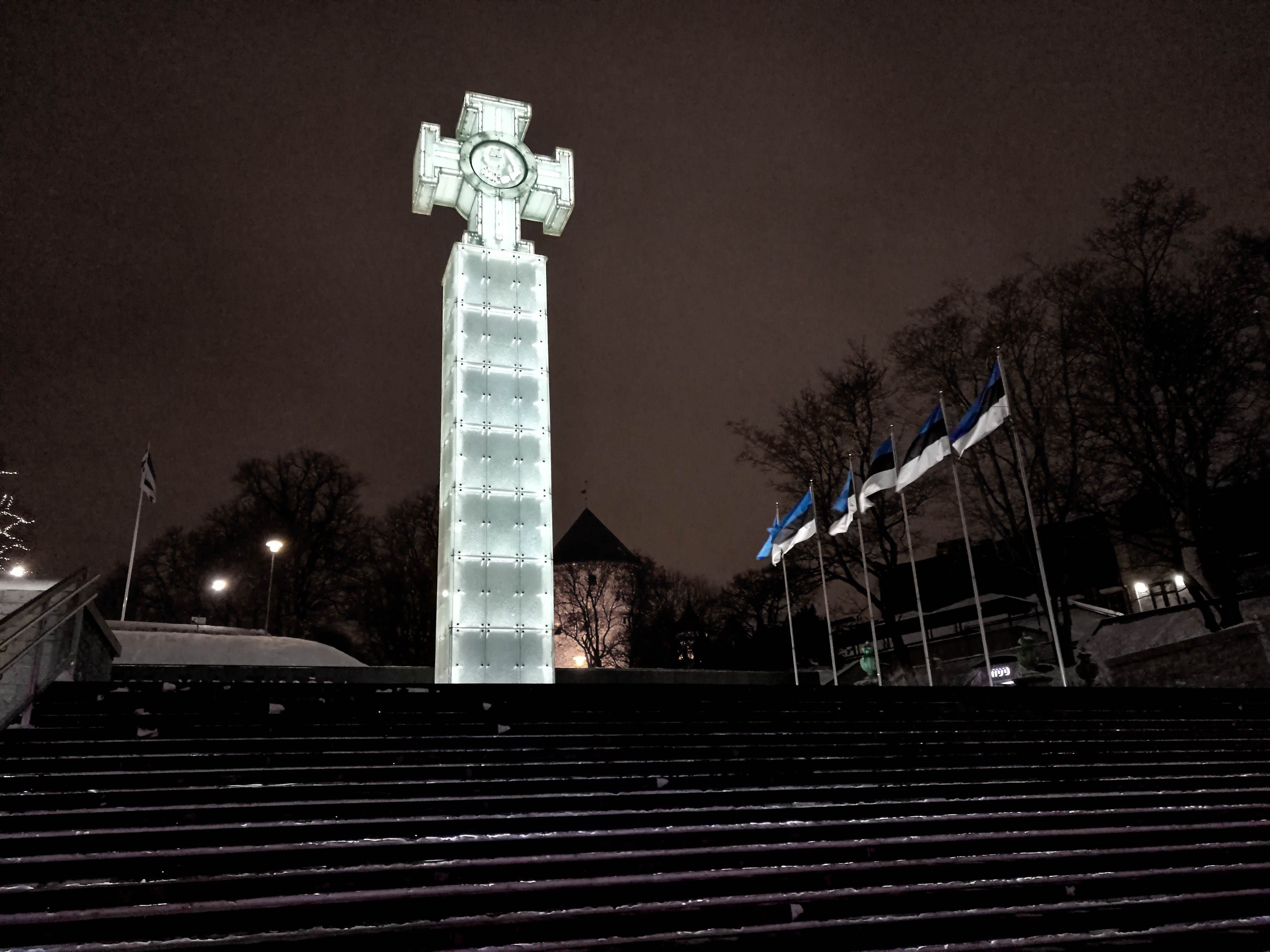
Independence of Estonia
Yielding to new demands of the Soviet Union, additional forces were allowed in on 17 June 1940. They spread all over the country, whereas troops from bases occupied Tallinn. Further, Soviet Union demanded the replacement of the government. Estonia became a Soviet republic on 6 August 1940.
Only 51 years later, thanks to the break-up of the Soviet Union and the Singing Revolution Estonia became an independent democratic republic again in 1991.
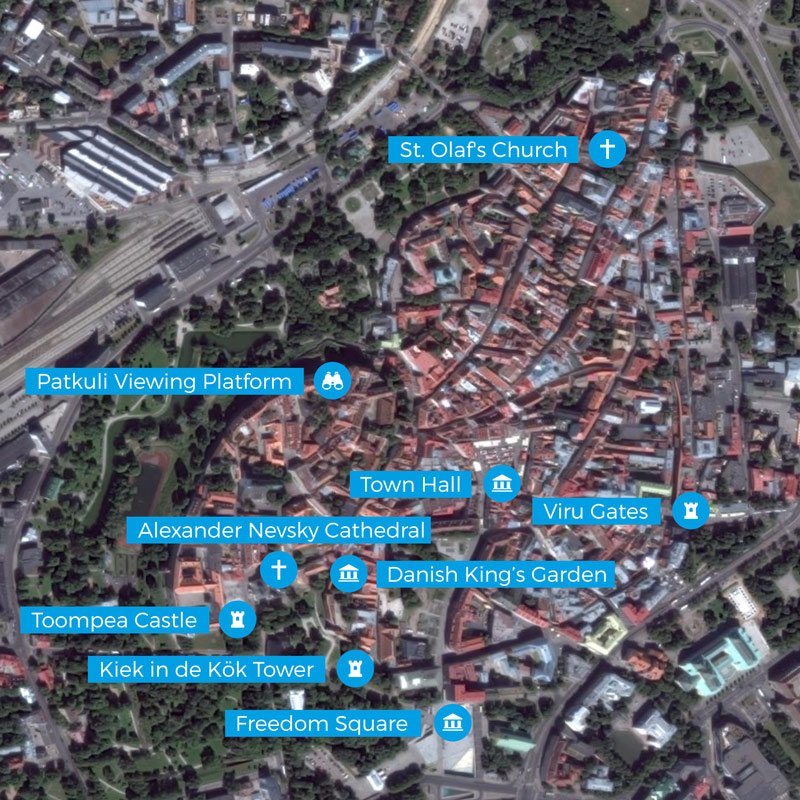
Follow me for more or read it all here: http://ctdots.eu
